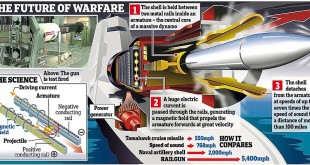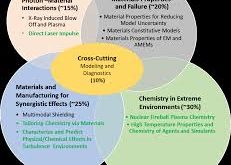BAE Systems has won a $245.3m low-rate initial production (LRIP) contract from the US Army to continue building the M109A7 self-propelled howitzer (SPH) and M992A3 ammunition carrier. The M109A7 will replace the army’s existing M109A6 self-propelled howitzer, formerly known as the paladin integrated management (PIM) programme.
The M109A7 program enhances the survivability, lethality, reliability, maintainability, performance, responsiveness, and lethality of the combat-proven M109A6 Paladin Self-Propelled Howitzer and M992A2 Field Artillery Ammunition Support Vehicle’s (FAASV) while providing increased commonality within the U.S. Army Armored Brigade Combat Team (ABCT).
Enhanced Survivability
The M109A7 offers increased survivability, because the crew remains inside the vehicle throughout the mission. Along with the “shoot and scoot” capability, the M109A7 features an Automatic Fire Extinguishing System (AFES), CROWS, and enhanced applique armor.
The M109A7’s “shoot and scoot” capability protects the crew from counterbattery fire by means of an onboard position navigation system and fire control system capable of executing missions digitally and via secure voice command.
The improved chassis structure provides greater survivability and commonality with the existing systems in the ABCT, reducing operational sustainability costs by replacing obsolete components.
Hull, turret, suspension, and automotive system upgrades increase system reliability. The M109A7 incorporates an onboard computer with comprehensive diagnostics programs that rapidly pinpoint equipment issues early for ease of maintenance while improving system availability.
The state-of-the-art “digital backbone” and power generation capability provides a more robust, survivable and responsive indirect fire support capability for ABCT Soldiers.
Long range accurate fires in all weather conditions
From the move, the M109A7 can receive a fire mission, compute firing data, select and occupy a firing position, transition from traveling configuration to firing configuration, and point its cannon, and fire within 60 seconds – all with first round fire-for-effect accuracy.
The M109A7 operates day or night, in all weather conditions, providing timely and accurate fires with a range in excess of 30km. Despite PIM receiving a new electronic gun drive system and an improved automated loader, its canon 155/39 mm will remain unchanged.
The 40-ton, next-generation 155mm Howitzer artillery cannon is able to fire precision rounds, accommodate additional armor protections and power more on-board electrical systems. The gun is capable of firing four rounds per-minute, including M982 Excalibur precision munition with range of 40km and the automatic rammer more consistently rams the round into the gun for consistent velocities and better accuracy.
The Precision Guidance Kit (PGK) is a combined fuze and GPS guidance kit that improves the ballistic accuracy of the current stockpile of high-explosive, field artillery projectiles. The Army plans to develop PGK for 155 mm, high-explosive projectiles (M795 and M549A1) with threshold accuracy of 50 meters Circular Error Probable and objective accuracy of 30 meters Circular Error Probable.
The PGK will operate with existing and developmental artillery systems that have digital fire control systems and inductive fuze setters such as the M777A2 Lightweight Towed Howitzer, the M109A6 Paladin Self-Propelled Howitzer, and the M109A7 Paladin Integrated Management Self-Propelled Howitzer.
Enhanced Mobility
Incorporating a new chassis, engine, transmission, suspension and steering system, the updated vehicle is expected to provide armoured brigade combat teams with a responsive, indirect fire system that can keep pace with the Abrams tank and Bradleys on the battlefield.
With an upgraded, 675 HP electronically controlled version of the BFV standard V903 engine, coupled with an improved HMPT- 800 transmission, the M109A7 has faster acceleration for rapid displacement, and the ability to keep pace with the maneuver forces it supports.
All-Electric.
PIM have new automotive and electrical systems. As a result, while the A7 weighs 25 percent more than the A6, it generates 50 percent more horsepower and almost four times as much electrical power.
M109A7 also leverages technologies such as a 600-volt on-board power generation, distribution and management system, coupled with high-voltage gun drive and projectile ramming systems to accommodate emerging technologies and future requirements as well as current requirements like the battlefield network.
The shift to an electric turret included a major redesign of the vehicle’s power system, converting the 600 hp engine’s work into up to 70 kW of 600 volt/ 28 volt direct current for use by various on-board systems. PIM’s 70 kilowatt generator accommodates the latest electronics, from communications networks to defensive jammers.
The M109A7 PIM also incorporates modern electric gun drive systems to replace the hydraulically-operated elevation and azimuth drives. The removal of the hydraulic systems saves the crew a tremendous amount of maintenance, and they retain manual backups for gun laying just in case.
The power system’s modularity means that if any one of the motors inside fails, it can be replaced in the field within less than 15 minutes, using the same single part type. In concrete terms, it means the howitzer crew can handle the problem themselves and continue the mission, instead of withdrawing for repairs.
Enhanced Commonality
The M109A7 chassis features a power pack, drive train, track, and suspension components common with the BFV, improving supportability and reducing the ABCT’s logistical footprint.
According to Military-Today website, the new self-propelled gun “shares engine, transmission, tracks and some other components with the Bradley infantry fighting vehicle. Such commonality allows reducing production, operating and maintenance costs.”
Army ground combat systems programme executive officer brigadier general David Bassett said: “The improvements not only bring significant commonality, a reduced logistical footprint and lifecycle costs savings to a large portion of the armoured brigade combat team, they also ensure relevancy by providing crucial offensive and defensive fires in support of combined arms manoeuvre, wide area security and other full-spectrum operations.”
US Army’s “new approach to acquisition”
The hardware represents the US Army’s “new approach to acquisition, in which expensive, ambitious, all-new designs give way to incremental, but still substantial changes to existing platforms,” Sydney Freedberg, Breaking Defense website deputy editor, said.
“M109A6 built a new turret and put it on the old chassis. M109A7 put a new chassis under the A6 turret, with a few upgrades to the turret, and effectively in two steps the Army built a new howitzer,” Mark Signorelli, BAE Systems head of combat vehicle programs, told Breaking Defense.
According to Freedberg, a source in the Congress told him that M109A7 PIM “is not a truly new vehicle in that it borrows from others, but still a success.” “PIM is more like surgically transplanting someone’s head onto a new body: It takes the old gun turret and installs it on an all-new chassis,” Freedberg stressed.
M109A6 Paladin
The M109A6 Paladin itself addressed the limitations of earlier M109 models via computerization and communications upgrades. Secure SINCGARS radios replaced the wires. Inertial navigation systems and sensors attached to the gun automatically tell the crew where they are, and where their shells are likely to land. Finally, automatic gun-laying translates the fire co-ordinates to a specific gun position. No aiming circles. No surveyed fire points. No wire lines.
Just move into the assigned position area somewhere, calculate data, receive orders from the platoon operations center, use FBCB2 (aka “Blue Force Tracker”) to verify the location of “friendlies,” use the automatic PDFCS (Paladin Digital Fire Control System) to aim the gun and send the shell on its way. Once the fire mission is over, the vehicle can move off, receive another target, then quickly lay and fire again.
The M109 had a crew of six: the section chief, the driver, the gunner, the assistant gunner and two ammunition handlers. The gunner aims the cannon left or right (deflection), the assistant gunner aims the cannon up and down (quadrant). The M109A6 Paladin needs only a crew of four: the commander, driver, gunner and an ammunition loader.
Improved armor added even more protection to the new system, and an upgraded engine and transmission made the M109A6 speedier. On-board prognostics and diagnostics were installed to improve the vehicles’ readiness and maintainability. Finally, ammunition stowage was made safer, and the load was increased from 36 rounds to 39 rounds of 155mm shells. Some of which can be M982 Excalibur GPS-guided shells.
Relevance of Artillery
Cannon artillery has always played a significant role in all of the nation’s conflicts, and the U.S. Army has continued to use 155mm cannon artillery since World War I. Operation Enduring Freedom and Operation Iraqi Freedom relied heavily on cannon artillery to provide timely indirect fire support, while minimizing collateral damage.
Artillery arrives in seconds rather than minutes or hours, is never unavailable due to bad weather, and cheaply delivers a volume of explosive destruction that would otherwise require hundreds of millions of dollars worth of bombers and precision weapons. Most combat casualties in the gunpowder age have come from artillery fire, and the US Army will need its mobile fleet for some time to come.
More than 550,000 cannon artillery rounds were called in to directly support units in contact while battling adversaries in harsh desert and mountainous terrains.
Adam Zarfoss, BAE Systems’ director of artillery programs said, “Artillery is playing an important role in operations in Iraq, with the Paladin providing critical fire support with both standard and precision munitions…
BAE Systems artillery and Bradley programmes director Adam Zarfoss said: “We’ve worked as a team to bring this much-needed enhanced combat capability to the soldier to address immediate needs while providing a platform that can support future growth as requirements evolve.”
The contract is for a second option year to produce an additional 30 vehicle sets. The army has a total acquisition objective of 580 sets.
 International Defense Security & Technology Your trusted Source for News, Research and Analysis
International Defense Security & Technology Your trusted Source for News, Research and Analysis


